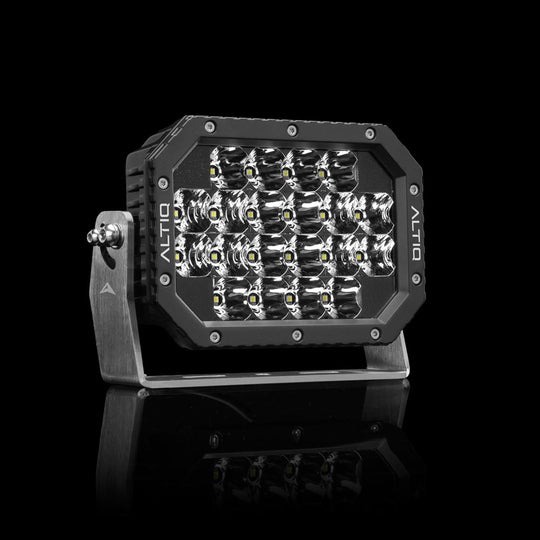Driving lights play a crucial role in enhancing visibility and safety while driving, especially in adverse weather conditions and low-light environments. These auxiliary lighting systems are designed to provide additional illumination beyond the vehicle's standard headlights, improving the driver's ability to see and be seen on the road.
- Types of Driving Lights
There are several types of driving lights available on the market, each serving specific purposes:
- Halogen Driving Lights: Traditional halogen bulbs are commonly used in driving lights due to their affordability and availability. However, they are gradually being replaced by more advanced technologies.
- LED Driving Lights: Light Emitting Diode (LED) driving lights are becoming increasingly popular due to their energy efficiency, durability, and brightness. LED technology also offers a wider range of design options for manufacturers.
- HID/Xenon Driving Lights: High-Intensity Discharge (HID) or Xenon driving lights produce a bright, bluish-white light that closely resembles natural daylight. While they offer excellent visibility, they are relatively expensive and require special ballasts for operation.
- Auxiliary Fog Lights: Fog lights are specialized driving lights designed to penetrate fog, rain, or snow more effectively than standard headlights. They have a wide, low-mounted beam pattern to minimize glare and reflection.
III. Benefits of Driving Lights
Driving lights offer several benefits for motorists, including:
- Enhanced Visibility: Driving lights significantly improve visibility, especially during nighttime driving or in inclement weather conditions such as fog, rain, or snow.
- Increased Safety: By illuminating the road ahead more effectively, driving lights help drivers identify obstacles, pedestrians, and other vehicles, reducing the risk of accidents.
- Improved Aesthetics: Many drivers opt for aftermarket driving lights not only for their functionality but also to enhance the appearance of their vehicles. Sleek LED driving lights, for example, can add a touch of style to any car or truck.
- Off-Road Capabilities: Off-road enthusiasts often install powerful driving lights to navigate challenging terrain during nighttime off-roading adventures. These lights provide the extra illumination needed to conquer rough trails and obstacles.
- Installation and Regulations
While driving lights offer numerous benefits, their installation and usage are subject to regulations to ensure safety and compliance with traffic laws:
- Proper Installation: It's essential to install driving lights correctly to avoid glare that can blind other drivers. Proper aiming and alignment are crucial to ensure optimal performance without causing distractions or hazards.
- Legal Requirements: Different jurisdictions have specific regulations regarding the use of driving lights. For example, some regions restrict the color and brightness of auxiliary lights, while others may require them to be mounted at specific heights and angles.
- On-Road vs. Off-Road Use: While driving lights are commonly used for off-road adventures, their usage on public roads may be subject to restrictions. Drivers must familiarize themselves with local laws and regulations to avoid fines or penalties.
- Maintenance and Care
To ensure the longevity and performance of driving lights, regular maintenance and care are essential:
- Cleaning: Dust, dirt, and debris can accumulate on driving light lenses, reducing their effectiveness. Regular cleaning with a soft cloth and mild detergent can help maintain optimal visibility.
- Inspecting Wiring and Connections: Periodically inspecting the wiring and connections of driving lights is crucial to identify any signs of wear, corrosion, or damage. Faulty wiring can lead to malfunctions or electrical issues.
- Replacing Bulbs: If a driving light bulb burns out or begins to dim, it should be replaced promptly to maintain consistent illumination. LED bulbs typically have a longer lifespan than halogen or HID bulbs but may still require replacement over time.
- Conclusion
Driving lights are invaluable accessories that enhance visibility, safety, and aesthetics for motorists. Whether navigating dark rural roads, tackling off-road trails, or driving through adverse weather conditions, these auxiliary lighting systems provide the extra illumination needed to navigate confidently. By understanding the different types of driving lights, adhering to regulations, and maintaining proper care, drivers can harness the full benefits of these essential components for a safer and more enjoyable driving experience. Visit the official website of altiq.com.au


No comments yet